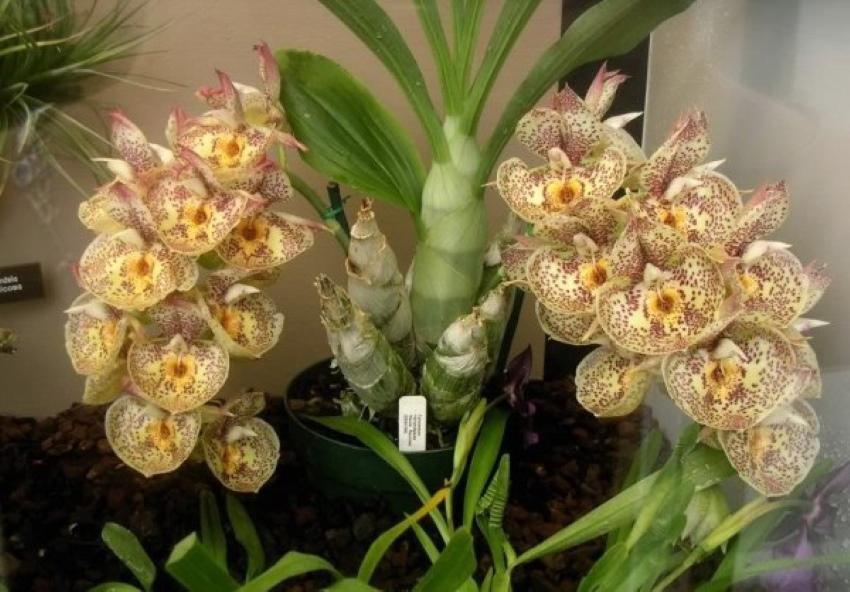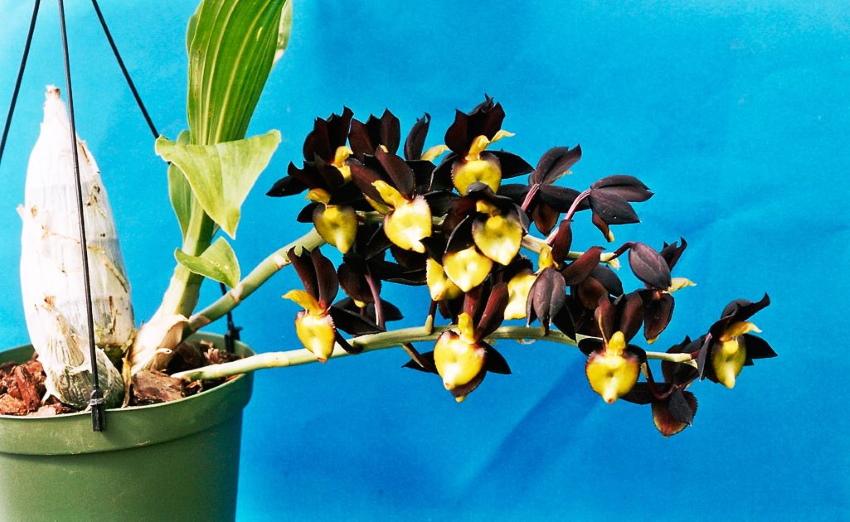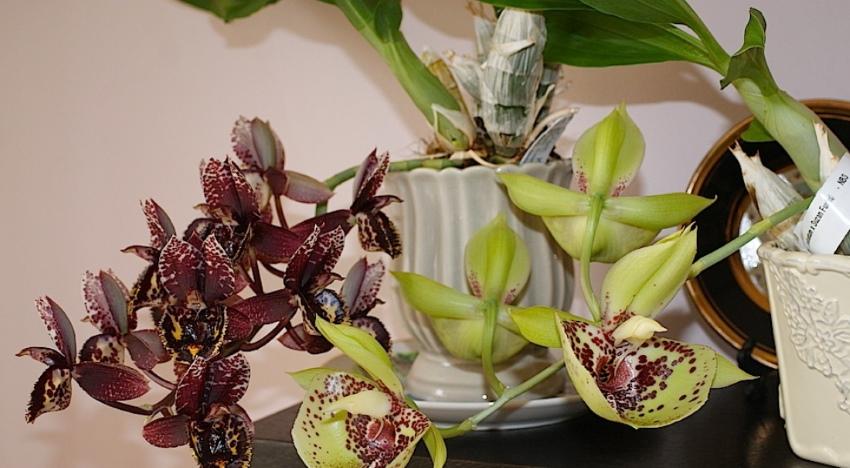Specific features of the catasetum orchid or how to distinguish it from other epiphytes
 Have you ever seen flowers of different shapes on one plant? This is precisely the main features of the catasetum orchid, one of the most original epiphytes. Due to this structure, they are distinguished into a separate genus, numbering up to 150 species. In turn, catasetum orchids are divided into several more subgroups. The genus got its name in honor of the catasetum subspecies, which represents the most numerous group of these orchids.
Have you ever seen flowers of different shapes on one plant? This is precisely the main features of the catasetum orchid, one of the most original epiphytes. Due to this structure, they are distinguished into a separate genus, numbering up to 150 species. In turn, catasetum orchids are divided into several more subgroups. The genus got its name in honor of the catasetum subspecies, which represents the most numerous group of these orchids.
Features of the catasetum orchid

It is easy to recognize the catasetum, barely looking at the bush, because it has an unusual structure:
- First of all, the bush consists of large pseudobulbs with short rhizomes (creeping shoots). They grow tightly to each other and are large in size and an elongated oval shape, reminiscent of carrots. Actually, for this, the flower is popularly called an orchid - a carrot. At a young age, bulbs actively grow foliage and can have up to 7 pairs of elongated plates.
- In autumn, the catasetum sheds its foliage, and the adult bulbs remain bare. This is how the flower prepares for the rest period.
- An orchid is characterized by dimorphism, when both male and female flowers bloom on the same plant. At the same time, the male ones are larger and seem to be inverted: the lip hangs over the thick petals. Female flowers are almost 2 times smaller and of the correct shape (the helmet lip is located under the petals).
In spring-flowering catasetums, the peduncle is formed on the bottom of the bulb. Orchids that bloom in summer or autumn lay it in the leaf axils.
The nuances of growing and caring for an orchid - carrot

Catasetum epiphytes are thermophilic and feel comfortable in summer at 30 ° C. At the same time, the night content should be cooler (at 20 ° C). Orchids love fresh and humid air, but do not tolerate stagnant moisture in the pot, which is why pseudobulbs quickly rot. They grow and bloom better in good, but diffused, lighting. Moreover, it often depends on its intensity what kind of flowers will appear on the peduncle.
A catasetum standing in partial shade on the north window will produce male flowers. An orchid living on the well-lit east side will have an arrowhead with female flowers.
During the period of active growth, from spring to autumn, the catasetum needs regular watering by immersing the pot in water. Once a week, it is fed with liquid fertilizer. It is also necessary to maintain high air humidity. From mid-autumn, the orchid is prepared for rest by gradually lowering the temperature and reducing watering. Top dressing is removed completely until spring. In winter, the bulbs are not watered at all, only if they are very wrinkled.
The minimum temperature in the room during the rest period is 18 ° C.
It is advisable to replant catasetum orchids every year. They grow strongly and the bulbs begin to bulge out of the pot. If more than 5 of them have grown, the bush needs to be divided by planting a pair of pseudobulbs in new pots.